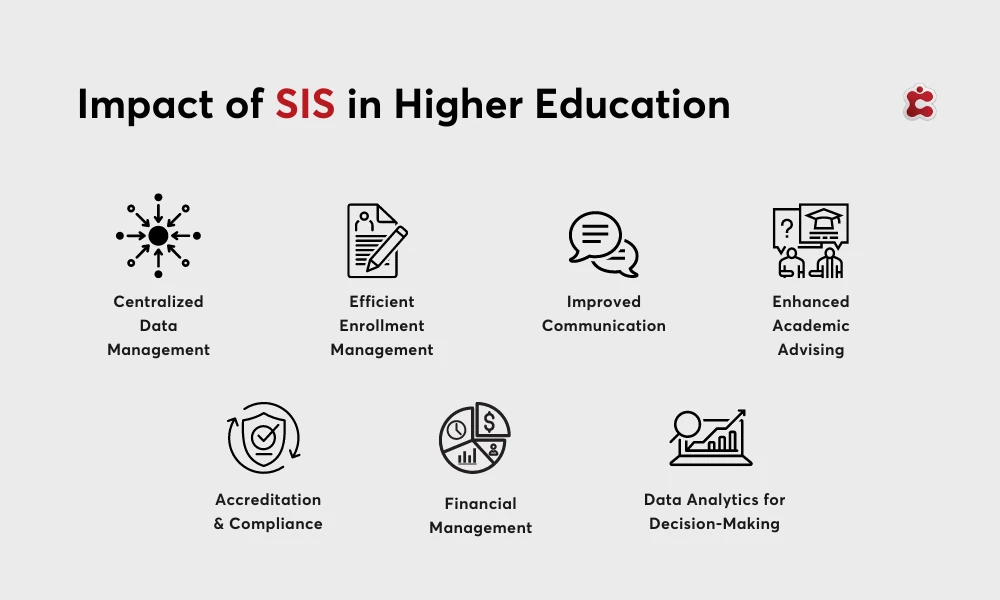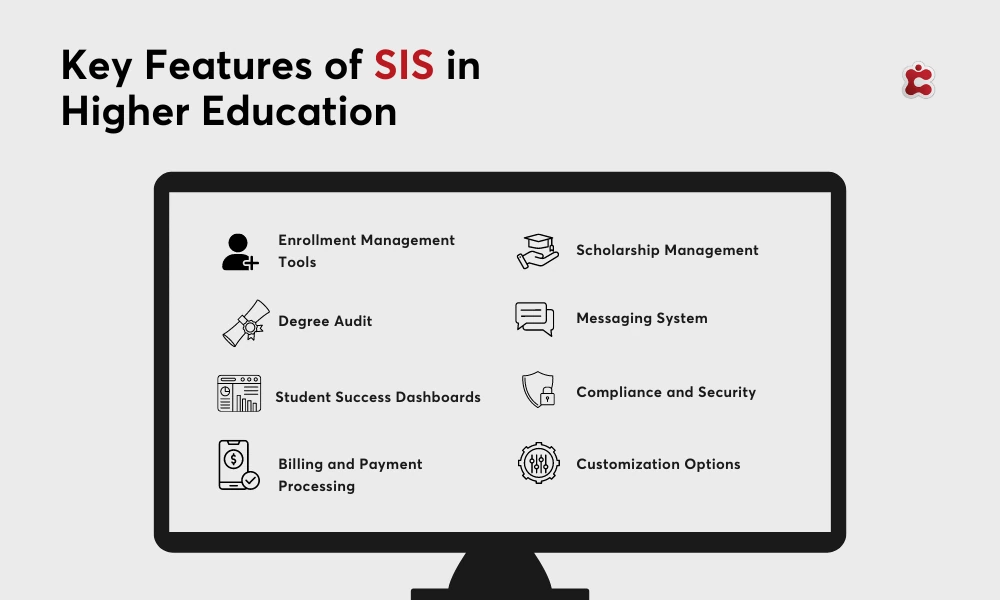Like students, every higher education has its unique characteristics and obstacles to overcome. With the rise of technology and the increased availability of resources, higher education has become a world-wide phenomenon. It is predicted that by 2030 there will be around 380 million students enrolled in higher education worldwide. However, amidst this growth and globalization, educational institutions must evolve to meet expectations and stay competitive.
To address these challenges, Student Information Systems (SIS) have become tools for improving the student experience in education. But what exactly are SISs, and how do they revolutionize the operations and interactions within institutions?
Student Information Systems, commonly known as SIS, are software solutions created to handle student data and streamline administrative tasks in colleges and universities. These systems manage student information related to admissions, enrollment, academic planning, and graduation processes.

Obstacles Encountered in Higher Education Environments
Universities and colleges face a multitude of challenges that significantly impact life. One major issue is enrollment management. With increasing student numbers and limited resources, universities must work hard to attract and retain learners.
Furthermore, effectively juggling the needs of developing curricula, faculty resources, and student interests necessitates forward-thinking planning and adaptable maneuvering. Yet one of the aspects of higher education today lies in fostering student engagement. In an age marked by distractions and information saturation, establishing connections between students and their educational settings remains a critical priority.
Student Information Systems in Higher Education
Student Information Systemsoffer advantages through their roles in simplifying administrative processes, enriching student services, and enabling data-informed decision-making. These systems efficiently handle information while enhancing institutional strategic planning and evaluation.
Efficient Administrative Streamlining
Efficiently streamlining tasks is vital within educational institutions. These establishments are responsible for overseeing admissions, registrations, and financial aid processes. SMS platforms automate these operations with precision reducing labor and eradicating inaccuracies. By digitalizing workflows and consolidating data sources, SMS platforms empower administrators to concentrate on initiatives, saving time and resources while ensuring precision and adherence to regulations.
Enhanced Student Engagement
Fostering interactions between students and faculty members is crucial. Student Management Systems facilitate smooth communication with user-friendly interfaces that cultivate a sense of camaraderie and assistance within the milieu. Furthermore, these platforms offer students a range of resources tailored to their individual preferences and learning methods. By empowering students to navigate their paths, Student Information Systems boost student satisfaction and retention rates.
Improved Decision-Making Based on Data
Data-driven decision-making is crucial for the success of any institution. SIS technology. Analyzes student data, providing insights for strategic planning and performance assessment. From enrollment patterns to achievements, these platforms equip stakeholders with the information to make well-informed choices. Aligning resources with objectives enables institutions to pinpoint areas for enhancement and foster ongoing innovation.

Essential Features in an SIS Selection Process
Selecting the SIS for an educational institution necessitates a careful evaluation of specific functionalities that cater to the institution’s distinct requirements and obstacles.
1. Higher education institutions require enrollment management tools that offer adaptability to accommodate admission processes and demands. Seek an SIS that offers customizable online application portals, automated application processing workflows and integration with financial aid systems. Moreover, features such as application fee waivers, document upload capabilities, and application status monitoring can streamline the admissions procedure.
2. When selecting a Student Information System for institutions, it’s important to opt for one that has academic advising tools, like appointment scheduling features, degree audit functions, and effective communication channels between advisors and students. It’s beneficial to choose a system with predictive analytics capabilities that can help identify students who may need support.
3. Look for an SIS that prioritizes regulatory compliance and ensures data security by offering encryption features, access control mechanisms, and audit trail monitoring. To safeguard student information, the system should adhere to standards such as FERPA and GDPR.
4. Opt for an SIS that provides user portals on devices for students and faculty members. These portals should allow access to functions and resources from anywhere at any time. Features like design, user-friendly navigation, and push notifications can significantly improve applications’ usability.
Classter’s Impact on Higher Education
Classter’s Student Information System is tailored to simplify processes in higher education institutions. It offers a user platform with features and advanced functionalities that add value to the educational environment.
The detailed student profiles within the system offer educators insights into students’ academic progress, involvement in activities, and specific support requirements. Additionally, the integrated academic scheduling feature optimizes timetables to improve the learning experience. Classter places an emphasis on data security by implementing measures to protect sensitive student information, including role-based access controls, data encryption, and regular security checks to ensure compliance with industry standards and regulations.
For instance, the Global School for Entrepreneurship (GS4E), a forward-thinking higher education institution, encountered challenges in managing the student journey using manual processes. Classes comprehensive solution provided GS4E with a platform for handling both in-class and out-of-class processes. This transformation enabled GS4E to enhance its operations, streamline communication with students and academic staff, and set the stage for growth and success.
Are you ready to initiate change within your higher education institution? Embrace Classters Student Information System to simplify operations, boost student engagement, and ensure success. Don’t just follow trends—shape them.
FAQ’s
Look for features such as enrollment management tools, academic advising functionalities, regulatory compliance measures, and user-friendly portals for students and faculty members
Your institution needs a Student Information System to streamline administrative tasks, enhance student services, and make data-informed decisions
Classter offers a comprehensive solution designed specifically for the unique needs of colleges and universities. Its user-friendly interface and customizable features make it easy to adapt to the specific requirements of each institution.

